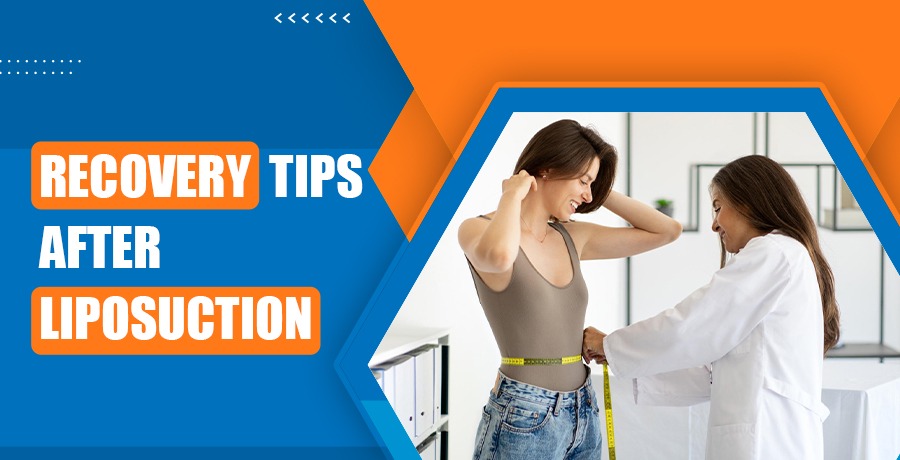
Deciding on liposuction is a major choice, often the result of seeing the changes in liposculpture before and after pictures. The contours are made during the procedure itself, but it is the time after that represents the outcome of the procedure.
It's important to remember that you are not just in recovery but it is part of the process that shapes your results into the smooth, refined results you picture after surgery. The best way to protect your investment and have a beautiful and long-lasting transformation is to understand and be involved in your recovery. This article will provide you with a good idea of what to expect and offer some easy and practical tips to support a comfortable and successful recovery.
The First 48 Hours: Your "Rest & Relax" Mission
This initial period is all about taking it easy. Your body has been through a significant procedure, and its primary job is to begin the healing process.
- Your New Best Friend: The Compression Garment: Your doctor will put you in a special elastic garment. It will feel tight, but it’s an absolutely necessary part of your recovery process. The garment is important because it reduces swelling, minimizes bruising, and allows your skin to conform smoothly to your new shape. Follow the instructions on how to wear it and when. It is one of the most important components to achieve a great outcome.
- Cherish Your Downtime: Use this time wisely. Don’t catch up on anything around the house or run errands for anyone. Plan to relax on the couch or in bed with your pillows. Time for your body to relax, and time for you to let someone else take care of you.
-
Don’t Let Your Discomfort Get Ahead of You: You will be sore and tender. It will feel similar to the discomfort you feel after a very hard workout. Your physician will prescribe some pain medication, so remember to take it on schedule for the first day or two while you are uncomfortable.
The First Week
As you start to feel a bit better, it’s tempting to return to your normal routine. The key word for this week is gentle.
-
Walking is Great: You should not perform any high-intensity exercise, but short and slow walks around your house are highly encouraged! Getting up and moving gently every hour or so can improve your circulation and help you heal faster, reduce swelling, and prevent serious issues like blood clots.
-
Stay Hydrated and Nourished:
Your body needs the right building blocks to rebuild itself. Drink lots of water to help flush out fluid and decrease swelling. Focus on healthy protein-rich foods like chicken, fish, beans, and eggs. Avoid too much salt and processed foods - these foods could cause an increase in swelling due to water retention.
-
Listen to Your Body:
This is the golden rule to the entire recovery process. If something causes you pain, stop doing it. Your body will provide you with good cues when you have pushed too hard. Rest is always an important part of the healing process.
Weeks 2 to 6
This is often the phase where you’ll start to see glimpses of your new shape, but it’s also when patience is most required.
- The Swelling Issue: Swelling is perhaps the most significant thing that will conceal your initial outcomes. It’s perfectly normal for this to last several weeks; and it can even look as though it varies day by day. In the meantime, please don’t be discouraged if you can’t see your final results in the mirror just yet. The compression garment remains your friend, so keep wearing it as instructed.
- Slowly Resuming Life: During this time you will likely be able to go back to desk work and light daily activities. However, this still means no heavy lifting, no intense cardio, or workouts, until your surgeon gives you the official nod, usually around the fourth to sixth week.
- Massaging the Area: Your surgeon may suggest gentle self-massage for the treated areas. It can help soften the tissues, smooth out any firmness, and continue to reduce swelling. Just ask for specific instructions on how and when to do this.
Protecting Your Beautiful Results
After the first recovery phase, the next task is to maintain your new shape for years.
- Fading Scars: The incision sites for lipo suction are small and placed in a strategic manner. They will fade from red to pink, and then to a pale, less visible line. It is important to use SPF 30 or stronger to protect your scars from the sun during the first full year to prevent darkening.
- Maintain (Don't Gain): Liposuction permanently removes fat cells from treated areas. However, the remaining fat cells in your body can still get larger if you gain weight. The best way to maintain your results is to stay at a consistent weight and eat a balanced diet while exercising. Let your amazing liposculpture before and after results motivate you to live a healthy active lifestyle!
The path to recovery is a journey, not a race. As long as you listen to your surgeon's orders, have patience with your body, and care for yourself appropriately, you will be on your way to embracing your amazing results.
If you have any additional questions regarding the liposuction journey, from consultation to recovery, Dr. Anup Dhir and his staff are here to provide experienced support every step of the way! Contact us for help scheduling your consultation today.

